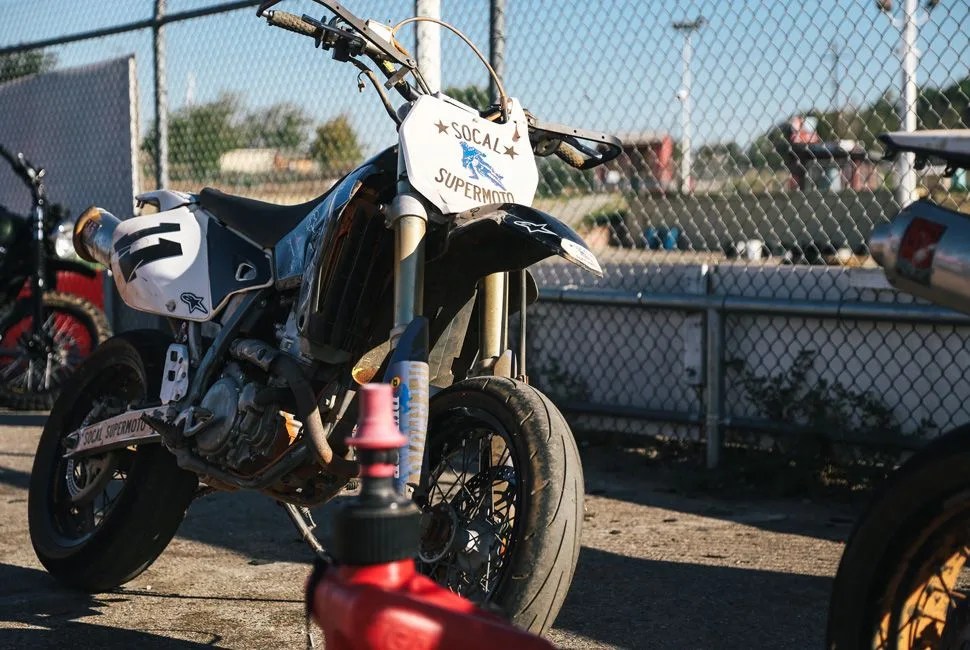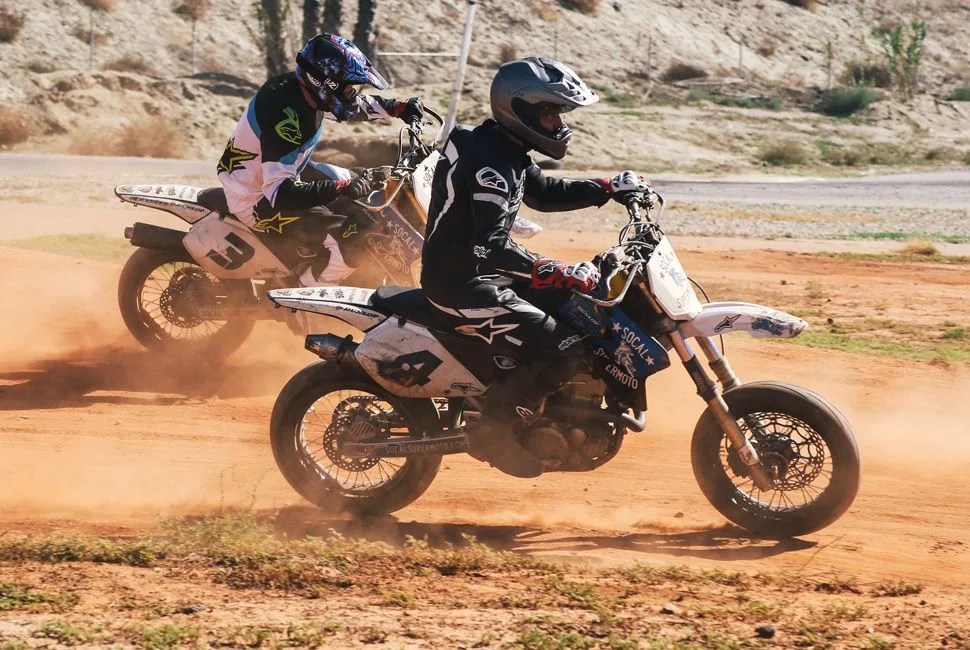These motorcycles are racing on a course like none other in the sport. The event is the Superbikers, and the course is one that combines elements of all surfaces that motorcyclists race on… The object here is to see which rider is best able to handle all the surfaces — to be the best all-around racer of them all. – Jim McKay for ABC, 1979
“Show me a guy who rides fast, and I’ll show you a rider who does supermoto,” says Brian Murray, President of SoCal Supermoto. “Supermoto teaches you to be relaxed, loose, and let the bike do its thing.” But it’s not just the riding style that aids in the development of the speed. “The geometry of the bike puts a microscope on whatever you’re doing wrong,” Murray adds. “You go back and forth from dirt to asphalt, with traction levels changing the entire time.” So you have a light, sensitive bike riding on long travel suspension connected to sticky tires, racing around a mixed-element track. If you do make a mistake, the low speeds (relatively speaking, for a track) and the quick agility of the bike allow you to make corrections, usually safely. Danger levels remain low. The combination of it all entices you to push your own limits, giving a perfect incubator for increasing bike handling and speed.
Murray started his operation renting out his personal XR400 supermoto bike to students preparing for their license test in 2003. His rental program grew in popularity, students started joining him on track days and later that year, he set up shop at Adams Motorsport Park in Riverside, California. Half go-kart track, half dirt course, it has humbled pros, amateurs and celebrities alike ever since.

Of all the racing schools I’ve attended, the thing they share in common is they tell you to forget what you know and just absorb what they have to teach. I had actually never been on a dirt bike before, let alone a supermoto bike, so I started from scratch any way you cut it. The first thing Murray imparts onto the class, even before track time, is BRAP — or BRakes, Ass, Push. Hit the brakes, move your ass to the outside of the seat, then push the bike down. It’s a simple process that breaks down the essentials of how to turn in supermoto style. Coming off of years of sport bike riding, the whole process seemed counterintuitive and backwards, but Murray counters with an authoritative mantra: “Ride the conditions, don’t ride the bike.”
Although dragging a knee in supermoto isn’t uncommon, with the tight and twisty nature of the tracks, it’s near impossible to bounce from one side of the bike to the other in certain turns. It’s quicker just to toss the bike side to side underneath you, to make the bike turn. With no long straights to relax on, it’s a constant wrestling match, one turn linking right to the next. And turning lap after lap, in the 107-degree Inland Empire heat, only a few miles from supermoto’s birthplace in Carlsbad, my respect for the inaugural racers rose.
When Jim McKay first introduced the Superbikers on ABC’s Wide World of Sports in 1979, he described a race that pits riders from all disciplines and styles against each other to see who is a Jack of all trades, and master of all. But supermoto has proved to be more than just the center on a venn diagram of two-wheeled racing. Neither McKay nor anybody else — including the sport’s credited inventor, Gavin Trippe — knew that it would grow into an entire motorcycling subculture. After ABC was forced to cancel the competition in 1985, the Europeans that raced in ABC’s WWoS hybrid event took it back to Europe and fostered it. Now known as supermoto, the cross-discipline sport made its way back to the States, most notably, by the way of the 2004 Summer X-Games.

